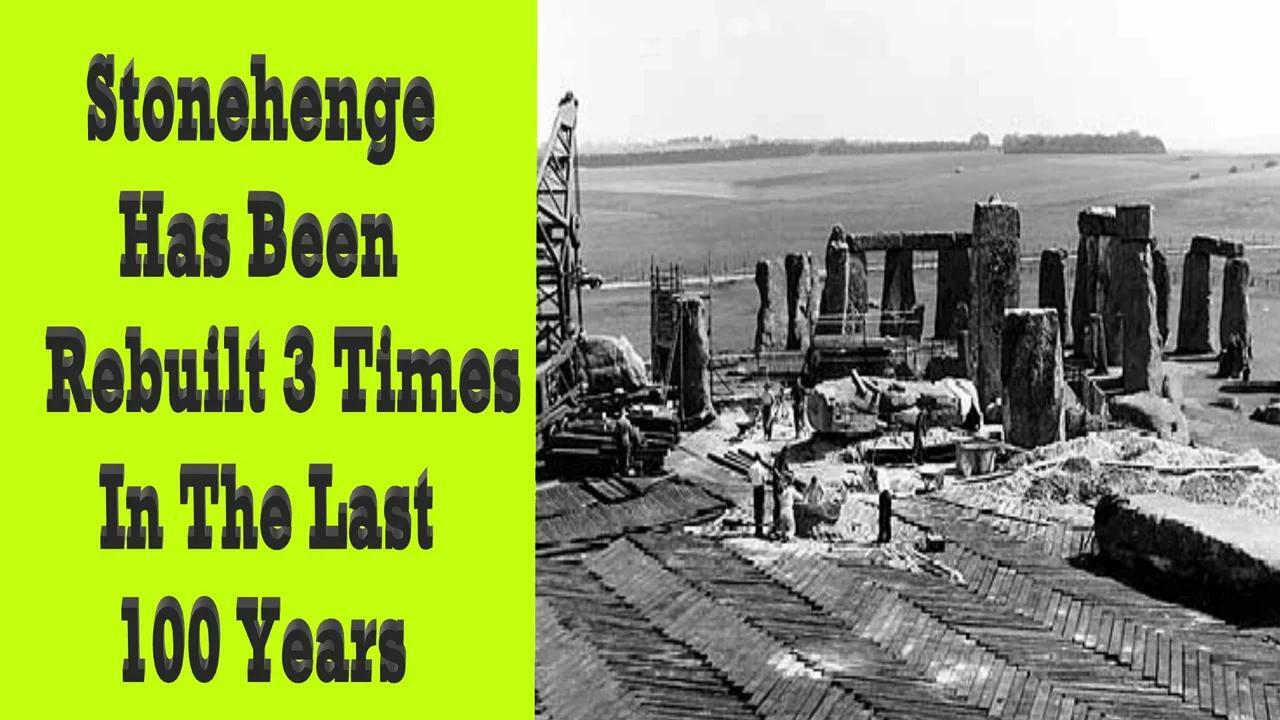This video is very misleading.
- The reconstructions only affected some of the stones, which were already damaged or fallen, not all of them
- We have several photos from the 19th century, so you can compare the current state with the one before, the first reconstruction was in 1901
It’s not some secret, you can read this on wikipedia, with more facts, e.g exact list of moved stones, not just 4 photos in a loop
Good to know, thanks.
Is there confirmation that the stones were returned to their same positions?
I did not know any restorations had taken place until today.
I don’t want to repeat wikipedia, you can read about it in the section “1901-2000”: https://en.wikipedia.org/wiki/Stonehenge#1901–2000
They even have 2 photos from the same location one from 1877, and the other from 2008.
Is there confirmation that the stones were returned to their same positions?
These are very tricky questions because, you have to define what is the “original” position. Stonehenge was built for nearly a 1000 years.
E.g. on the last stage they removed some stones at phase 3/V (1930 BC to 1600 BC). So which one is the original? Were they vandals, or this was part of the concept? Should we consider Stonehenge 3/IV as the true Stonehenge, because that was the biggest?
If you check the photo from 1877 you can see that a lot of stones were already fallen. In the video the guy says, it’s a “modern representation”. But what should be the correct workflow? Should we just let them collapse? Because that’s the other option. And than what will you say to your grandson: “I’m sorry you cannot see Stonehenge, but we just let them fall”?
Another note if you think about Stonehenge as a sun calendar. The British Isles move about 2.5cm/year due to plate tectonics. It means Stonehenge moved 10 meters since it’s construction. It’s possible that at some point it will move too much that it won’t even look at the correct direction, and the Stonehenge Avenue won’t look at the sunrise of the summer solstice. In that case should we relocate the whole area to compensate for continental drifting? Because relocated version would be as intended, and the actual location would be just wrong.
We have the technology to move big things and place them elsewhere and reassemble. Read about Abu Simbel and the other Egyptian monuments moved because of the construction of the Aswan-dam. They still look majestic, and the other option would be nobody can see them because they are underwater. Are these “modern representations”?
- https://en.wikipedia.org/wiki/Abu_Simbel
- https://en.wikipedia.org/wiki/International_Campaign_to_Save_the_Monuments_of_Nubia
Actually this question is part of a 100 years old debate without a final answer:
- Athens Charter in 1931 was the first congress where they tried to figure out how to deal with historic monuments in the XXth century
- Venice Charter in 1964 was a much more complex guideline, and this was used worldwide for the remainder of the XXth century. Nowadays it’s a bit dated, and too modernist and they don’t necessarily follow it on reconstructions, read the section Criticism on wiki.
Exceptional detail, thanks. I agree, the video does paint it as a number of sacrilegious restorations, whereas each would have been undertaken to maintain as much original character and position as possible.
By ‘original’ position I meant taking fine triangulating measurements between untouched stones, and then replacing at the same angle and position. ie. It would be interesting to find out if there were historians or engineers making the lead decisions.
I honestly was only focussing on the TIL part of there being any changes/restoration at all over time, and can agree it now looks better than a pile of rubble.
All good points. Restoration and modification of sites has been going on for thousands of years also. The Vatican’s St Peter’s basilica is far different from the original church which was much simpler and likely just a reuse of an older Roman building. It is now believed that things like Greek statues and the Parthenon were actually brightly painted.
Also, if it was aligned with, say, the north star, then that has also shifted position over thousands of years too. The earth’s precession means polaris hasn’t always been the north star.
They move the stones back and forth twice a year for daylight saving time
The problem is they have to move the stones every time they adjust the clock
And still people flock to it while there are many other henges that are far more accessible and original.
I think this is the biggest one, that’s the reason. The trilithons are more than 7 meters high. Or do you know bigger ones?




